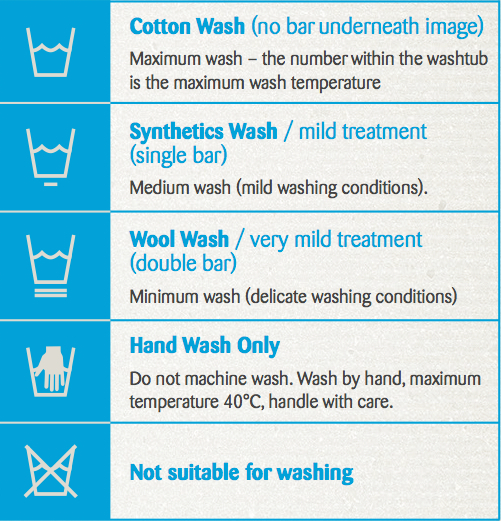Whether it’s your first or nth time doing laundry – load size, water temperature and washing cycles might still stump you. Contrary to popular belief, it’s not as easy as just throwing the clothes in and pressing a few buttons.
Before you go trigger-happy on the cycles of a washing machine, you have to take the time to sort out your clothes. Yes, we can hear your exasperated groans – but this important step will definitely aid you in doing proper laundry (using a washing machine, not a washing board) like an adult. A way to separate your clothes would be through understanding the Wash Care symbols on your clothes.

There are a huge variety of washing machines available in Singapore, so we’ll try our best to be the guide that you can count on for to clean your dirty laundry! If you are still unsure, you could read the manual that was given with the machine itself, but honestly – ain’t nobody got time for that.
There are a few things you need to take note of before dumping a pile of clothes in the machine:
STEP ONE: Set the size of your load.
This could be determined by the weight of your clothes in relation to the size of your washing machine. An alternative gauge for the load is:
- ¼ full – small setting (1-3)
- ½ full – medium setting (4-7)
- ¾ full – large setting (8-9)
- Full capacity – super large setting (10)
STEP TWO: Select the right water temperature for the load.
This is to ensure clothes retain the original fit and design. Although hot water sanitises and kills germs effectively, it may also shrink, fade or even set stains into clothes. Hence, it is important to set the temperature that’s suitable for your clothes. (Pssst, some old machines have this automatically set, so you can skip this part if you’re one of the lucky ones!)
- Cold water: best for delicate fabrics, dark colours and lightly soiled clothes
- Warm water: best for synthetic and permanent press fabrics, coloured or heavily soiled clothes with oil or stains
- Hot water: best for white cotton fabrics or garments used close to the body like underwear or socks
STEP THREE: Pick the right washing cycle for your clothes.
A washing cycle determines the speed at which the clothes tumble in the machine, and another that spins the water out of the clothes. This could also be done manually.
Here are some of the most common pre-set cycles, explained:
- Normal: Hands down, the best option for everyday fabrics and clothing – cotton, blended fabrics with average soil. The machine uses a high-speed wash and spin, which may be harsh on clothes.
- Delicates or Hand Wash: Appropriate for clothes tagged with ‘gentle wash’ – sheer fabrics, bras, lingerie and silk. It uses a cold water wash and rinse, a slower spin or no spin at all.
- Heavy Duty: Usually used for when you are washing a crazy load of heavily soiled and sturdy garments – like jeans. The machine uses a longer wash cycle with high-speed agitation and spin to remove as much water as possible.
- Super Speed: Hit this cycle when you need a particular item of clothing immediately for that date you’ve been trying to prepare for. It uses a shortened hot water wash cycle and high-speed spin to shorten drying times.
- Bulky: Used for heavy items such as blankets, comforters, rugs and pillows. These items will be soaked to allow water and detergent to penetrate through the thick fabric. The machine will use a slower spin cycle.
- Permanent Press: This is the perfect cycle to minimise wrinkles in those annoying tops that appear the moment you sit – particularly synthetic, light to normally soiled clothes. It uses a medium-speed wash, low-speed spin and a cool down period to reduce wrinkling.
- Rinse + Spin: As the name suggests, this setting is mainly to rinse and spin out the moisture from clothes that do not require deep cleaning – like swimsuits or beach towels.
It may seem like a tedious process, but it will guarantee you fresh-smelling and clean clothes that’ll make everyone eager to be around you during the next staff meeting, or even on your commute to work.

All it takes is a little bit of time, luck and practice – press start, and you’ll be on your way to having clean laundry every day!


